
The baby was brought to Fortis Escorts Heart Institute, Okhla, in a serious condition with breathing difficulties, sepsis-like symptoms, heart failure signs, elevated heart rate, excessive perspiration, inability to feed, liver enlargement, and failure to gain weight. An echocardiogram revealed that the baby suffered from a hole in the heart, also known as patent ductus arteriosus (PDA) — a condition where an extra blood vessel is found in babies before birth and just after birth.

Amidst concerns over the outbreak of deadly virus infections like Nipah in Kerala, the state on Monday reported a rare case of recovery from amoebic meningoencephalitis, which has a 97 percent mortality rate. State Health Minister Veena George's office on Monday confirmed that it was a rare occurrence, which has a mortality rate of 97 percent and it is believed that only 11 persons in the world so far recovered from the infection. Earlier detection of the infection helped in speedy recovery of the boy. The minister also praise the efforts of the medical team that treated the boy.

For the first time, scientists have grown 3D brain models using cells from multiple people. The new hybrid creations, which researchers have dubbed "chimeroids," are a variation of brain organoids — tiny 3D models made of tissue that mimic the structure and function of a full-size brain. These models are more accurate to human biology than 2D cellular models or animals like lab mice. Because of this, scientists hope that the models will accelerate drug research and development.

Ten years ago, a scan showed that I had torn the meniscus in my knee. The pain was bad and I was limping a lot of the time. My doctor recommended arthroscopic knee surgery to fix it. Being scared of scalpels, I asked whether there were other options. He said I could try physiotherapy, but that it was unlikely to work. I tried the physio and did the recommended exercises diligently, and my knee pain and function returned to almost normal. I even ran my first (and only) marathon a year later.

A small farmer from a remote village walks into the nearest town’s health clinic. He breathes into a tube connected to a Vionix analyser. This device compares the farmer’s breath with hundreds of millions of other samples from around the world. An AI model, running on the cloud, identifies patterns of disease manifestations in the spectral signatures of the breath sample and instantly provides results on the farmer’s smartphone.

The first man to receive a genetically modified pig kidney transplant has died two months after the operation, the hospital which carried out the procedure has said. Richard "Rick" Slayman, 62, was suffering with end-stage kidney disease before undergoing the operation in March. Massachusetts General Hospital (MGH) said on Sunday there was no indication his death was a result of the transplant.

A girl born deaf can now hear unaided after participating in a world-first trial. The CHORD study is for children born with hearing loss due to a genetic condition called auditory neuropathy. Auditory neuropathy is a condition where the ear can detect sound normally, but has a problem sending signals to the brain.

A study found that one-third of patients receiving surgery for adult spinal deformity (ASD) also have severe hip osteoarthritis (OA), which can lead to poor spinal alignment and physical functionality. Findings of the study published in The Journal of Bone & Joint Surgery.

For the roughly 1.5 million Americans per year who survive a traumatic brain injury, health outcomes vary widely. Not only can these injuries lead to a loss of coordination, depression, impulsivity, and difficulty concentrating, but they come with an amplified risk for developing dementia in the future. The glaring absence of treatments for such a widespread condition drove a team of scientists at Gladstone Institutes to uncover, on a molecular level, how traumatic brain injuries trigger neurodegeneration—and just as importantly, how to target that process to prevent long-term damage.

Sanofi and SK bioscience have entered into a new chapter of their collaboration in pneumococcal vaccines with an expanded agreement to develop, license and commercialize next-generation PCVs for both pediatric and adult populations, reaffirming their commitment to fighting pneumococcal disease.

Drinking tea or coffee is associated with a lower risk of developing cancers of the head and neck, including cancers of the mouth and throat, according to a review of previously published studies. Drinking 3-4 cups of coffee daily was linked to a 17 percent lower risk of head and neck cancer, while consuming one cup of tea was associated with a 9 percent lower risk, according to the findings published in the journal Cancer. Previous research has shown that bioactive compounds in coffee and tea, such as caffeine, have anti-inflammatory and antioxidant properties which contribute to lowering disease risk. A recent study also suggested that coffee, in moderation, could promote healthy longevity.

Sapience Therapeutics announced that the first patient has been enrolled in its phase 2 dose expansion study evaluating ST316, the company’s first-in-class antagonist of ß-catenin. Enrollment of the study’s phase 1 monotherapy dose escalation portion was completed in July 2024.

Researchers have identified nearly 200 chemicals linked to breast cancer in food packaging materials and plastic tableware, with many capable of migrating into the human body. In a study published in ‘Frontiers in Toxicology’, they highlighted the presence of at least 189 potential breast carcinogens, including PFAS, bisphenols, and phthalates, in food contact materials (FCMs). Jane Muncke, study co-author, managing director and chief scientific officer at the Food Packaging Forum, a non-profit foundation based in Zurich, Switzerland said, “There is strong evidence that 76 known or potential breast carcinogens from food contact materials recently purchased all over the world can be found in people.”

British drugmaker GSK said on Wednesday its experimental herpes simplex virus (HSV) vaccine candidate failed to meet the main goal of a mid-stage trial and would not be taken forward to a late-stage trial.

A pooled analysis from the BOREAS and NOTUS phase 3 studies showed that Dupixent reduced exacerbations and improved lung function compared to placebo in adults with uncontrolled chronic obstructive pulmonary disease (COPD) and evidence of type 2 inflammation (i.e., raised blood eosinophils).

Positive results from the HERCULES phase 3 study showed that tolebrutinib, Sanofi’s oral brain-penetrant BTK inhibitor, met the primary endpoint of improvement over placebo in delaying time to onset of confirmed disability progression (CDP) in people with non-relapsing secondary progressive MS (nrSPMS).

This WHO Medical Product Alert refers to one batch of falsified Oxymorphone Hydrochloride 40mg. The falsified product was detected in the unregulated supply chain in Finland and reported to WHO in July 2024 by the Finnish Medicines Agency (FIMEA). Oxymorphone Hydrochloride is a semi-synthetic opioid used to treat moderate to severe pain. However, laboratory analysis of samples of the falsified product found that the tablets contained metonitazene instead.

Merck announced positive topline results from its phase 2b/3 clinical trial (MK-1654-004) evaluating clesrovimab (MK-1654), the company’s investigational prophylactic monoclonal antibody designed to protect infants from respiratory syncytial virus (RSV) disease.

A vaccine to fight cancers affecting women will be available in five to six months, and those in the age group of 9 to 16 years will be eligible for inoculation, Union Minister Prataprao Jadhav said on Tuesday. The Union Minister of State for Health, Family Welfare and Ayush (Independent Charge) said that research on a vaccine is nearly complete and trials are underway. "The number of cancer patients has increased in the country, and the central government has initiated steps to address this issue. Women above 30 will undergo screening at hospitals, and daycare cancer centres will be established for early detection of the disease," Jadhav said.

Under the leadership of Chief Minister Yogi Adityanath, state-of-the-art arrangements are being meticulously planned for the upcoming Maha Kumbh to welcome devotees from across India and abroad. Among the latest initiatives, the government is set to introduce artificial intelligence (AI) in Intensive Care Units, aiming to enhance the quality of patient care and ensure a superior healthcare experience during the event. Being deployed for the first time within the Mela grounds, the advanced AI messaging flow system is capable of interpreting and conveying the concerns of patients from any part of the country or the world to doctors.

It has been identified that the 38-year-old man from Edavanna in Malappuram--who is under treatment for mpox--is infected with the Clade 1b strain of the virus, making him the first such case in the country. Top officials of the health department were tight-lipped about the test result. A statement from Health Minister Veena George regarding the test result is expected on Tuesday. She has convened a meeting of a state-level Rapid Response Team (RRT) to assess the situation when mpox cases increase. Clade 1b strain of the virus is more infectious than Clade 2 and it is currently behind the global outbreak.

Recognizing the urgent need for a broad-based effort globally to reduce errors in medical diagnosis, the World Health Organization (WHO) is calling on all stakeholders to “Get it right, make it safe!” as part of the World Patient Safety Day campaign on 17th September. The theme ‘improving diagnosis for patient safety’ was selected in consultation with a wide range of stakeholders – from patients to policy-makers – to highlight how everyone has a vital role to play in reducing the risks and impact of errors in diagnosis.

National Institute of Mental Health and Neuro Sciences (NIMHANS) is ensuring to make mental health care more relatable and accessible. The Institute which plays a crucial role in challenging mental health stigma and advocating for a society that prioritizes mental well-being is making to normalize conversations about mental health.

Under the vision of the Prime Minister to rid the country of TB by 2025, five years ahead of the global target for eliminating the disease under the Sustainable Development Goals, the Union Ministry of Health and Family Welfare has approved the introduction of the BPaLM regimen, an official statement said. The BPaLM regimen is a novel treatment for multi-drug-resistant tuberculosis (MDR-TB) under its National TB Elimination Programme (NTEP) as a highly effective and shorter treatment option.

Of the over 47 million digital out-patient department (OPD) registrations under the National Health Authority’s (NHA’s) ‘scan and share’ service in the last two years, 12.4 million OPD tokens were generated by Uttar Pradesh alone.

KITES Senior Care, a division of Lifebridge Senior Care, founded by Rajagopal G, Dr A S Arvind, and Dr Reema Nadig, has launched a new Geriatric Care Centre on Kanakapura Road, Bengaluru. The centre will offer seniors, personalised transitional and rehab care to support their recovery after surgery, palliative and hospice care focused on comfort and pain management, and dependable respite care.

Noida-based startup Redcliffe Labs, a purpose-driven PAN India diagnostic service provider, has announced the launch of its advanced MPOX testing capabilities, reinforcing its commitment to national health security. This strategic move is a significant step towards bolstering the nation’s preparedness against potential MPOX outbreaks.

Researchers have introduced a novel diagnostic method for identifying Helicobacter pylori (H. pylori) and its antibiotic-resistance mutations, offering a cost-effective solution for patients in rural areas with limited access to diagnostic facilities. This advancement, developed using CRISPR-based technologies, holds promise for addressing global health challenges posed by the bacterium. H. pylori infections affect over 43 percent of the global population and are associated with a range of gastrointestinal conditions, including peptic ulcers, gastritis, dyspepsia, and gastric cancer. A significant challenge in managing these infections is resistance to clarithromycin, driven by specific mutations in the bacterium’s 23S ribosomal RNA gene. Such resistance often necessitates repeated diagnostic tests and multiple antibiotic treatments, complicating eradication efforts.
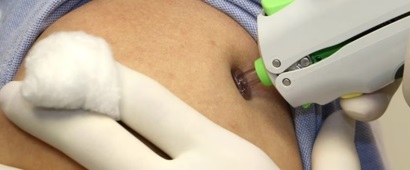
As an answer to the fear of needle-syringes, a team of researchers at Indian Institute of Technology (IIT) Bombay have developed a shock syringe, which doesn’t rely on piercing the skin with a sharp tip. Instead, it uses high-energy pressure waves (shock waves) that can travel faster than the speed of sound to pierce the skin. The team led by Prof. Viren Menezes from the Department of Aerospace Engineering in their study published in the Journal of Biomedical Materials & Devices, the IIT Bombay researchers compared the effectiveness of drug delivery by a shock syringe versus a regular needle on laboratory rats. The team explained, “These waves, when generated, compress the surrounding medium (such as air or liquid) through which they travel. A similar effect happens during a sonic boom; when an aircraft flies faster than the speed of sound, it creates shockwaves that push and disturb the air.”

The National Pharmaceutical Pricing Authority (NPPA) has released the revised calculation sheet for the ceiling price of antibiotic combination amoxicillin 1000 mg + clavulanic acid 200 mg power of injection following a review order from the Department of Pharmaceuticals (DoP). The review order was issued on October 4, in favour of an application filed by Cipla Ltd. The revised calculation sheet shows the price of Rs 141.65 per vial, as compared to the current ceiling price of Rs 140.66 per vial, notified in March 26, 2024. The price revision is after including the updated Price to retailer (PTR) of Rs 111.52 for Advent 1.2 mg injection powder.

Fujifilm India, a leader in medical technology, has unveiled the groundbreaking mikoto Colon Model, a cutting-edge endoscopy simulation technology, during the Indian Association of Gastrointestinal Endosurgeons (IAGES) Prof. Dr. B Krishna Rau Simulation Training Programme, a hands-on endoscopy workshop, in Chennai.

The Indian Institute of Technology (IIT), Madras has become the first research organisation in the world to release the most detailed 3D high-resolution images of the fetal brain, Director V Kamakoti said on Tuesday. The key applications of generating such high-resolution brain images are advancements to current fetal imaging technologies for early diagnosis and treatment of developmental disorders. The pioneering work by the Sudha Gopalakrishnan Brain Centre of IIT Madras pushes the frontiers of Brain Mapping Technology and places India in the global league of brain mapping science as this is a first-of-its-kind work anywhere in the world, he said.

Honeywell has introduced a new liquid flow sensing platform designed and developed to increase the accuracy of dosing liquid medications and improve the treatment process for patients.

US-based Stryker, a global leader in medical technologies, has announced the launch of its groundbreaking 1788 Advanced Imaging Platform in India, continuing its legacy of excellence in surgical visualisation. The 1788 platform is Stryker’s most comprehensive and sophisticated surgical visualisation system to date, designed for use across multiple specialties and providing surgeons with enhanced imaging capabilities for improved patient outcomes.

Growing incidence of lifestyle diseases and easing demand for affordable health care delivery are driving the healthcare market in India. A recent report by HSBC Global research on India hospitals says seven listed hospitals will add 14,000 beds in the next 3-5 years. A total of 22,000 new beds is expected, including those by other private hospital chains.

On the eve of World Patient Safety Day, the World Health Organization (WHO) urged all stakeholders to commit to reducing diagnostic errors and improving patient safety. The WHO emphasised that delayed, incorrect, or missed diagnoses can prolong illness and, in some cases, result in disability or even death. World Patient Safety Day, observed annually on September 17, was established by the WHO in 2019 following the adoption of resolution WHA72.6 by the World Health Assembly.

Cancer patients should not delay or stop their treatment by following unproven remedies, oncologists at Tata Memorial Hospital said after former India cricketer Navjot Singh Sidhu claimed at a presser that his wife Navjot Kaur defeated stage 4 cancer with dietary and lifestyle changes. In a statement posted on X, the Director of Tata Memorial Hospital, Dr C S Pramesh, said, "Parts of the video imply that starving the cancer by not eating dairy products and sugar, consuming haldi (turmeric) and neem helped cure her 'incurable' cancer." These comments have no high quality evidence to support them, the statement signed by 262 oncologists from the Tata Memorial Hospital, both past and present, said.

Delhi AIIMS has launched the GRASSROOT (Gravity Stent-Retriever System for Reperfusion of Large Vessel Occlusion Stroke Trial) clinical trial to evaluate the safety and efficacy of an advanced brain stent for treatment of stroke clots particularly in Indian population. The study went live for enrolment on August 15 and the first patient was successfully treated on August 25. Subsequently, the patient was discharged from hospital, said Dr Shailesh Gaikwad, Professor and Head of Department of Neuroimaging and Intervential Neuroradiology at Neurosciences Centre, All India Institute of Medical Sciences (AIIMS), Delhi. The GRASSROOT trial is the first-ever study in India to test a novel next generation brain stent designed for Indian and Asian healthcare scenarios.

Yashoda Medicity, a new healthcare facility by Yashoda Foundations in Indirapuram, has introduced three advanced technologies in its Radiation Oncology department, positioning itself as a leader in cancer treatment and care in the region. The adoption of these technologies makes Yashoda Medicity the only hospital in Southeast Asia equipped with such equipment.

Wockhardt Hospitals, Mira Road, organised the third season of its Cyclothon on September 1st, attracting more than 1,200 cyclists from across Mumbai, including major cycling groups. The event was held to raise awareness about heart health ahead of World Heart Day, which falls on September 29, 2024. Participants cycled through a 30 km and 15 km route across Uttan-Gorai Island, promoting fitness and heart health.

A growing number of Bengalureans, especially younger individuals, are reporting persistent joint pain long after recovering from dengue, causing concern among medical experts. Although they test negative for the virus, these patients experience severe joint discomfort, a symptom that was absent during their illness. Doctors are now investigating whether a mutation in the dengue virus may be responsible for this unexpected development, raising concerns about its impact on the city's youth.

In a country where vaccination is often associated only with childhood immunisation and the need for adult vaccines is often overlooked, HCMCT Manipal Hospital and Pfizer India have collaborated to launch a dedicated Centre for adult vaccination at HCMCT Manipal Hospital, Dwarka, New Delhi, strengthening the delivery of adult vaccines.

A urine dipstick test, a simple and cost-effective diagnostic tool, can significantly prevent complications such as organ failure, heart attacks, and premature deaths, particularly among those with hypertension and diabetes, according to a newly released report by the Tamil Nadu Public Health Department. Doctors analyzed data from 5.7 million people across Tamil Nadu who took the test between July 2023 and May 2024 as part of a state ‘urine dipstick testing program’ for the early detection of chronic kidney disease (CKD). The test was administered at all primary health centers and health sub-centers for individuals with diabetes and hypertension. The urine dipstick test, recommended during routine check-ups or when urinary tract infection, kidney disease, or diabetes is suspected, involves dipping a plastic stick with chemically treated pads into a urine sample. The results revealed that 13,082 patients had high levels of albumin, an important indicator of kidney damage.

Although dengue is known to cause mild flu-like symptoms, the mosquito-borne viral illness has profound neurological implications that are often overlooked, said experts on Tuesday. Amid the monsoon in India, dengue cases have spiralled in various parts of the country, including Karnataka, Kerala, Telangana, Andhra Pradesh, Odisha, Delhi and Maharashtra. According to the latest data from the Municipal Corporation of Delhi (MCD), there have been 246 dengue cases in the national capital till June 30 this year. During the same period in 2023, Delhi saw only 122 cases, 143 cases in 2022, 36 cases in 2021, and 20 cases in 2020.

From polio to the coronavirus, vaccines play a pivotal role in protecting human health against a range of perilous diseases. As researchers strive to comprehend viruses and innovate new vaccines, it’s imperative to emphasise the significance of immunisation. Hence, World Immunisation Week is observed annually from April 24 to 30. During this week, let’s explore the significance of both traditional and emerging vaccines that are essential for everyone.

Statins, a class of cholesterol-lowering drugs, have no effect on kidney function, a research team led by the University of Iowa has found. The research team, led by clinical professors Michelle Fravel and Michael Ernst, in the College of Pharmacy, examined the association between statin use in older adults and changes in two important indicators of kidney function -- estimated glomerular filtration rate and urine albumin-to-creatinine (protein-to-waste) ratio.
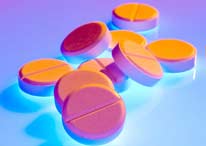
Patients with atrial fibrillation are typically prescribed an anticoagulant, or blood thinner, to reduce the risk of stroke, but many may discontinue them or never receive a prescription due to concerns of increased risk of bleeding complications. Researchers from Mass General Brigham evaluated a drug that represents a new class of anticoagulants known as Factor XI inhibitors for treating patients with atrial fibrillation as part of the AZALEA-TIMI 71 Study. The trial was stopped early by the recommendation of the Data Monitoring Committee due to an overwhelming reduction in bleeding compared to standard-of-care treatment. The researchers report in the New England Journal of Medicine that abelacimab, a Factor XI inhibitor, significantly reduced bleeding compared to a standard-of-care anticoagulant, rivaroxaban

Adults with overweight or obesity and type 2 diabetes who are given the sodium glucose cotransporter 2 (SGLT-2) inhibitor drug dapagliflozin alongside moderate calorie restriction achieve much higher rates of remission compared with calorie restriction alone, finds a trial published by The BMJ today. The researchers say this study provides a practical strategy to achieve remission for patients with early type 2 diabetes.

Antibiotics, antivirals, vaccinations and anti-inflammatory medication are associated with reduced risk of dementia, according to new research that looked at health data from over 130 million individuals.

Age-related macular degeneration (AMD) is the leading cause of vision loss in individuals over 65, characterized by abnormal changes in the macular, resulting in reduced vision and distorted objects. Dry AMD accounts for 90 percent of all AMD cases, with relatively mild vision impairment; however, approximately 30 percent progress to the severe vision loss associated with wet AMD within 10 years. The only FDA-approved treatments for dry AMD as of 2023 are two injectable drugs, which are limited by concerns over complications from intravitreal injections and modest efficacy in restoring vision.
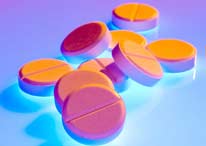
A new RSV drug designed to protect young children was 93 percent effective at preventing hospitalization for the viral disease, a new study reports. Furthermore, the drug was 89 percent effective at preventing all types of doctor visits for RSV, which is short for "respiratory syncytial virus."
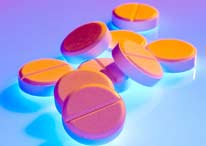
Kumamoto University scientists have unveiled a novel compound, HPH-15, with dual effects of reducing blood glucose levels and combating fat accumulation, marking a significant leap in diabetes treatment innovation. Type 2 diabetes, a condition affecting millions worldwide, is often accompanied by complications like fatty liver and insulin resistance, which challenge current treatment methods.

Effective immunity hinges on the ability to sense infection and cellular transformation. In humans, there is a specialized molecule on the surface of cells termed MR1. MR1 allows sensing of certain small molecule metabolites derived from cellular and microbial sources; however, the breadth of metabolite sensing is unclear.
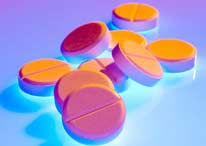
Already the go-to drug of choice for millions with type 2 diabetes, metformin might also fight lung cancer if those patients have it as well, new research shows. Metformin appears to help boost the benefits of immunotherapy drugs used to fight lung tumors, according to a team led by Dr. Sai Yendamuri. He directs thoracic surgery at Roswell Park Comprehensive Cancer Center in Buffalo, N.Y.

Biological E Limited's Corbevax is being administered to children in the age group 12-14 in India. This age group got the Indian government's nod to be receive vaccine against the novel coronavirus from 16 March, Wednesday. These children have to register for getting the vaccine on the CoWIN portal. India's third indigenous anti-Covid vaccine has been manufactured by Hyderabad-based Biological E Limited. Biological E has supplied 5 crore doses of Corbevax to the Centre, which has then distributed the same to states.

Biological E seems confident regarding getting emergency use authorisation for use of its COVID vaccine Corbevax among children in the age group of 5-12 years. Currently, the vaccine is inoculated among children in the age group of 12 to 14 years The Hyderabad-based company Is qualified to produce around 1 billion dosages of Corbevax annually and it is geared up to meet any increase in demand. Currently, the company has produced 30 crore vaccines as part of its commitment made to the Government of India, with 5 crore dosages already supplied.

Biotech firm Biological E. Limited is geared to facilitate the first phase of the vaccination drive for the 12-15 age group and is ready with 30 crore doses of which five crore has been rolled out to 17 different sites in the country, said a top official of the firm. "This is the most affordable COVID-19 vaccine for the Government of India which is providing free vaccination to all eligible citizens. The pricing of CORBEVAX in the private market will be Rs 800 (and inclusive of all taxes and vaccine administration charges will cost Rs 990) The vaccine is being sold at Rs 145 per dose to the government," Mahima Datla, managing director of Biological E. Limited said at a virtual media interaction on Wednesday. "We have an annual production capacity upto one billion vaccines," Datla said. The firm collaborated with the Texas Children's Hospital and the Baylor College to develop Corbevax vaccine. Dynavax, Inc from USA supported Corbevax development by providing the adjuvant and THSTI Delhi conducted key immunogenicity testing as part of a comprehensive clinical trial development plan.

Only about 3,800 children aged between 12 and 14 were vaccinated against Covid-19 in the city on Wednesday, the first day of vaccination for this cohort in the country. All the children were administered Corbevax, India's first indigenously developed protein subunit vaccine against Covid-19, made by Biological E. Each dose in the private market will cost Rs 800 per dose, excluding GST, and around Rs 990, including taxes and administration charges. For the government, the price will be Rs 145. There are nearly 6.2 lakh children in this age group in Delhi who are eligible for the vaccine. Hospital officials said the first day saw a lukewarm response; footfall is expected to pick up after Holi.

The baby was brought to Fortis Escorts Heart Institute, Okhla, in a serious condition with breathing difficulties, sepsis-like symptoms, heart failure signs, elevated heart rate, excessive perspiration, inability to feed, liver enlargement, and failure to gain weight. An echocardiogram revealed that the baby suffered from a hole in the heart, also known as patent ductus arteriosus (PDA) — a condition where an extra blood vessel is found in babies before birth and just after birth.

Amidst concerns over the outbreak of deadly virus infections like Nipah in Kerala, the state on Monday reported a rare case of recovery from amoebic meningoencephalitis, which has a 97 percent mortality rate. State Health Minister Veena George's office on Monday confirmed that it was a rare occurrence, which has a mortality rate of 97 percent and it is believed that only 11 persons in the world so far recovered from the infection. Earlier detection of the infection helped in speedy recovery of the boy. The minister also praise the efforts of the medical team that treated the boy.

For the first time, scientists have grown 3D brain models using cells from multiple people. The new hybrid creations, which researchers have dubbed "chimeroids," are a variation of brain organoids — tiny 3D models made of tissue that mimic the structure and function of a full-size brain. These models are more accurate to human biology than 2D cellular models or animals like lab mice. Because of this, scientists hope that the models will accelerate drug research and development.

Ten years ago, a scan showed that I had torn the meniscus in my knee. The pain was bad and I was limping a lot of the time. My doctor recommended arthroscopic knee surgery to fix it. Being scared of scalpels, I asked whether there were other options. He said I could try physiotherapy, but that it was unlikely to work. I tried the physio and did the recommended exercises diligently, and my knee pain and function returned to almost normal. I even ran my first (and only) marathon a year later.

A small farmer from a remote village walks into the nearest town’s health clinic. He breathes into a tube connected to a Vionix analyser. This device compares the farmer’s breath with hundreds of millions of other samples from around the world. An AI model, running on the cloud, identifies patterns of disease manifestations in the spectral signatures of the breath sample and instantly provides results on the farmer’s smartphone.

The first man to receive a genetically modified pig kidney transplant has died two months after the operation, the hospital which carried out the procedure has said. Richard "Rick" Slayman, 62, was suffering with end-stage kidney disease before undergoing the operation in March. Massachusetts General Hospital (MGH) said on Sunday there was no indication his death was a result of the transplant.

A girl born deaf can now hear unaided after participating in a world-first trial. The CHORD study is for children born with hearing loss due to a genetic condition called auditory neuropathy. Auditory neuropathy is a condition where the ear can detect sound normally, but has a problem sending signals to the brain.

A study found that one-third of patients receiving surgery for adult spinal deformity (ASD) also have severe hip osteoarthritis (OA), which can lead to poor spinal alignment and physical functionality. Findings of the study published in The Journal of Bone & Joint Surgery.

For the roughly 1.5 million Americans per year who survive a traumatic brain injury, health outcomes vary widely. Not only can these injuries lead to a loss of coordination, depression, impulsivity, and difficulty concentrating, but they come with an amplified risk for developing dementia in the future. The glaring absence of treatments for such a widespread condition drove a team of scientists at Gladstone Institutes to uncover, on a molecular level, how traumatic brain injuries trigger neurodegeneration—and just as importantly, how to target that process to prevent long-term damage.
Disclaimer: This news page has curated abstracts of daily healthcare news stories from various daily news outlets. To view the complete story, click on the link (provided with each news). Biological E Limited in collaboration with TodaySource has not verified these news stories and are not liable for the authenticity of the news.
If you choose to provide us with your email address or any other personally identifiable information, we will use it only to send you our newsletter or respond to your query.